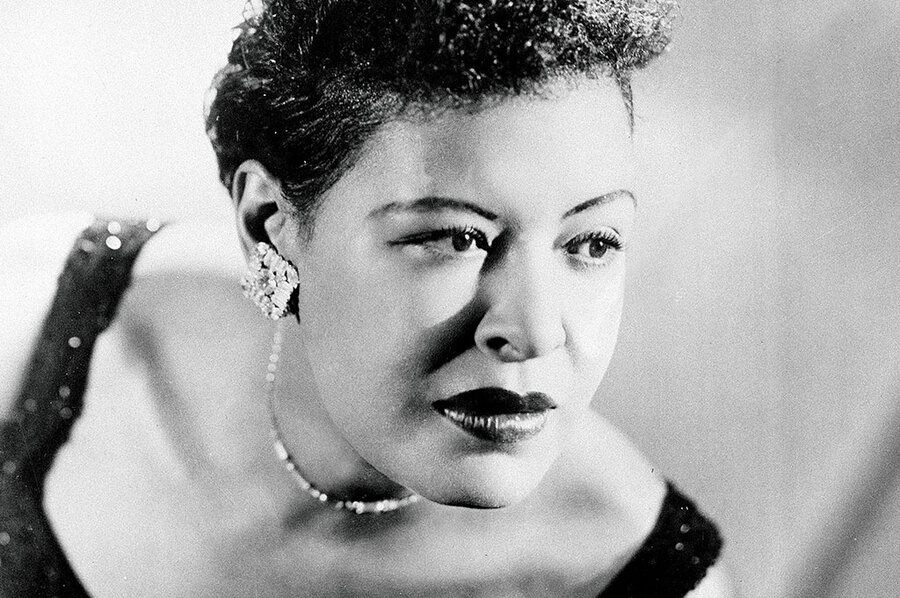A moment to honor the legacy of ‘Lady Day’
Loading...
Jazz appreciation month has extra significance this year. April 7 marked the centennial of Billie Holiday’s birth. The Harlem native was commemorated with a slew of tribute concerts and a posthumous star on the Apollo Walk of Fame, firmly placing her in the constellation made up of such musical legends as Louis Armstrong, Aretha Franklin, and James Brown.
Her music – famous for its unique tempo and depth of emotion – shines with fresh starlight as well. Two popular jazz vocalists recently released albums that explore her songbook. Cassandra Wilson’s “Coming Forth by Day” (Legacy Recordings) and José James’s “Yesterday I Had the Blues” (Blue Note) demonstrate how differently Holiday’s repertoire can be interpreted: Ms. Wilson gives it a sepia-toned experimental chamber rock treatment, while Mr. James employs a traditional piano, double bass, and drums rhythm section.
“Billie Holiday is a true icon,” explains Kim Nalley, a San Francisco-based vocalist and scholar. Ms. Nalley portrayed the title character in the 2006 musical “Lady Day in Love” and will perform “The Music of Billie Holiday” with her band at the SFJAZZ Center in San Francisco on July 17.
The image of a singer with a flower behind her ear easily identifies Holiday, Nalley notes. But Holiday’s influence can also be found throughout popular culture. Dark post-punk rockers Siouxsie and the Banshees recorded “Strange Fruit,” one of Holiday’s best-known numbers, in 1987. In 2009, Electronica practitioner Pretty Lights sampled her songs on two of his tracks. And writer/public radio hero David Sedaris’s comedic impression of her singing style was an early calling card.
Nalley also hears some Holiday in artists as disparate as R&B vocalist Macy Gray and singer/songwriter Madeleine Peyroux.
“People seem to play up her tragedies,” Nalley laments. “But she was a genius who changed singing forever. She was the first microphone singer who wasn’t a belter,” she adds. “And Billie didn’t try to be hip and didn’t do tunes fast. She ‘just’ connected with people emotionally.”







